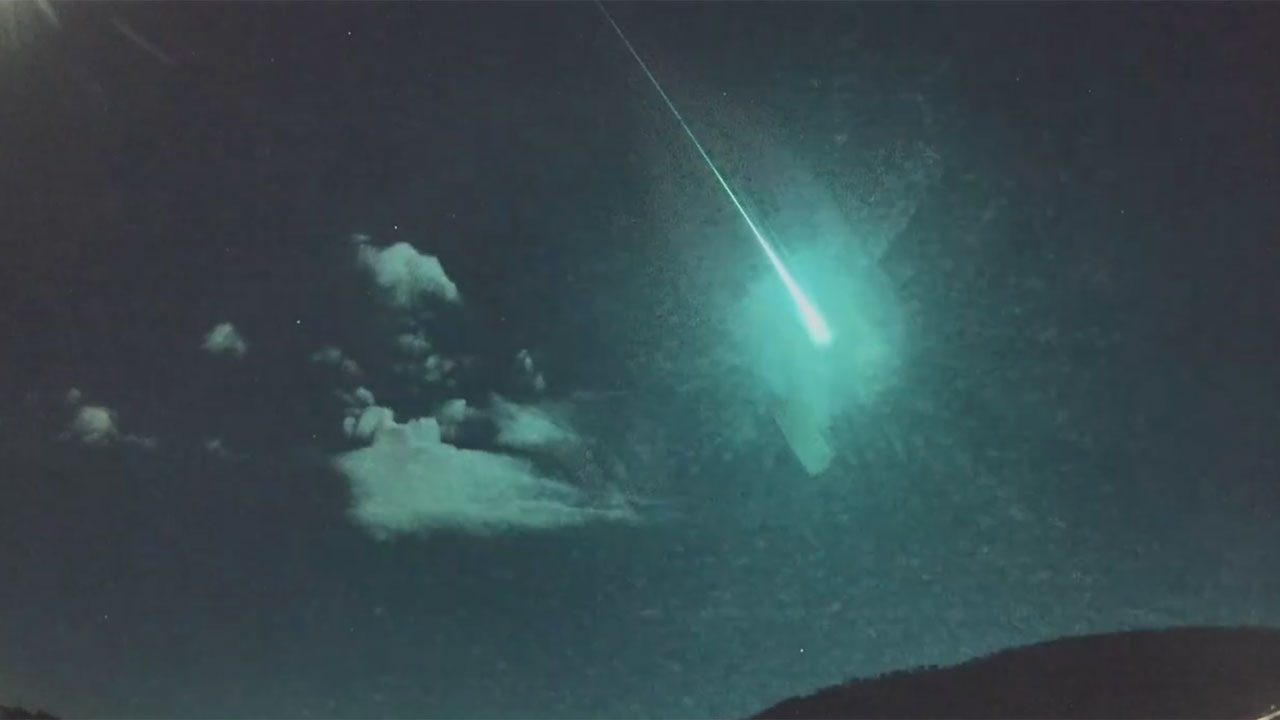Fragment from Blue Comet Illuminates Skies Over Spain and Portugal

Residents in parts of Spain and Portugal were treated to a breathtaking sight on Saturday night as a mysterious blue fireball streaked across the sky, leaving spectators in awe.
Initially mistaken for a meteor, the European Space Agency (ESA) later clarified that the luminous display was caused by a fragment of a comet hurtling through European skies at a staggering speed of 45 kilometers per second before disintegrating over the Atlantic Ocean.
The Spanish Calar Alto astronomical observatory, along with Andalusia’s Institute of Astrophysics, identified the celestial phenomenon as having a “cometary origin,” further adding to the intrigue surrounding the event.
Videos captured by witnesses in various cities and towns quickly went viral on social media, showcasing the vivid blue and green hues of the speeding object as it illuminated the nocturnal sky.
The ESA shared a captivating video of the event on social media, providing a stunning visual of the comet fragment soaring above the western Spanish city of Caceres, near the Portuguese border. Similarly, footage from a concert in the Portuguese city of Barcelos captured the celestial spectacle as it unfolded overhead, adding an ethereal backdrop to the musical performance.
Bernardo Taborda, a resident of Lisbon, described the surreal experience of witnessing the sky suddenly transform into a vivid green hue while strolling through the city with friends. The moment, he recounted, felt like a scene from a movie, leaving everyone in awe of the spectacle unfolding above them.
The event prompted numerous calls to emergency services, with reports suggesting possible impact sites near the Portuguese towns of Castro Daire or Pinheiro. However, subsequent investigations by firefighters yielded no fragments, with the ESA indicating that the comet likely disintegrated entirely over the Atlantic Ocean.
In the aftermath of the event, questions arose about the nature of comets, meteors, and asteroids. While asteroids are rocky or metallic objects orbiting the sun, comets are composed of ice and dust and exhibit distinctive tails when near the sun. Meteoroids, on the other hand, are small fragments that break off from asteroids or comets, becoming meteors upon entering Earth’s atmosphere. If a meteor survives and reaches the Earth’s surface, it is termed a meteorite.
Despite the rarity of such celestial events, they serve as a reminder of the awe-inspiring wonders of the universe and the mysteries that continue to captivate humanity’s imagination.
